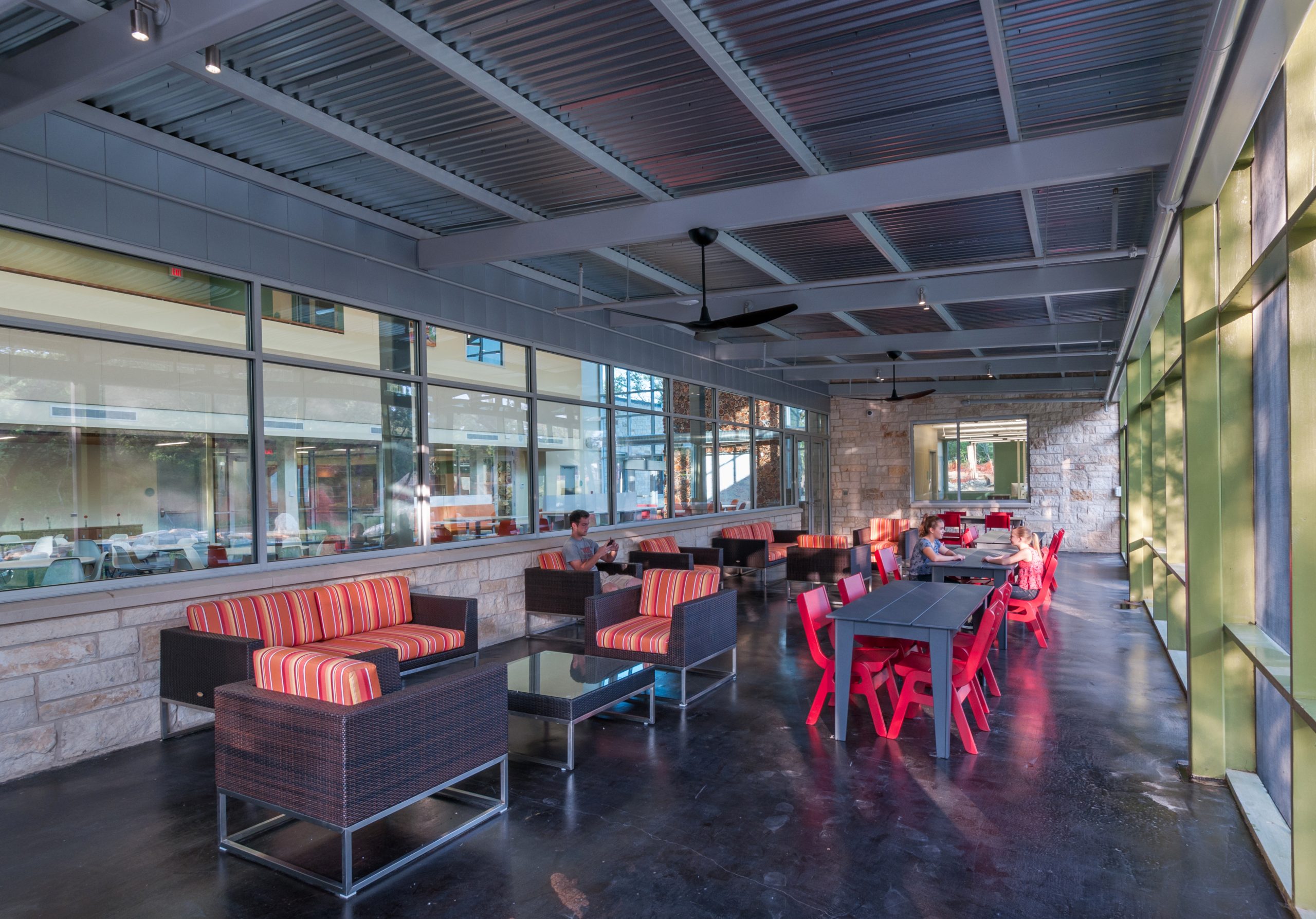
Indoor-Outdoor Connections
Indoor-Outdoor Connections
Problem
Humans evolved as outdoor animals that need to be connected to nature to sustain their well-being. Yet, students often spend a majority, or all, of the school day indoors. Furthermore, most buildings only provide windows on one side of a classroom with students forced to face away from the outdoors; corridors tend to be cut off from natural daylight altogether.
Solution
As a way to ensure students have access to nature, it is essential that schools have strong indoor-outdoor connections that form a natural link to extend indoor learning spaces beyond the walls of the school. This can be achieved by incorporating the following features: numerous exterior vistas; outdoor project porches, learning terraces, and upper-level learning balconies; outdoor seating areas for reading, eating, conversing, etc.; and natural and landscaped features such as trails, bodies of water, gardens, and playfields.
Related Patterns Interior/Exterior Vistas, Multiple Intelligences, Connected Campus, Daylighting, Agile Spaces, Health, Fitness, & Wellness
View Image Gallery








Learn More
- The Value of Outdoor Environments to K-12 Learning, Health, and Student Safety
Indoor-outdoor connections unlock the benefits of learning outside.
- Children With Attention Deficits Concentrate Better After Walk in the Park
This research indicates that "doses of nature" improve concentration.
- Connecting to Nature is Essential to Our Well-being
How might we create more outdoor learning experiences?


